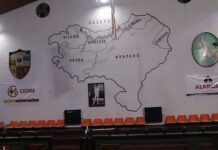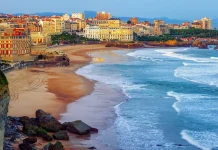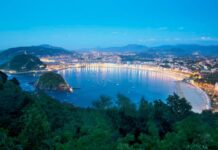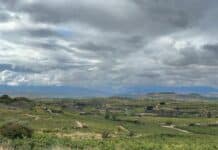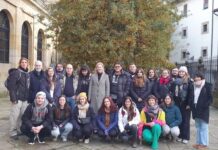Every April 26, as has become a tradition on the blog, we dedicate a moment to remembering the war crime that was the Bombing of Guernica and the more than 1,500 victims (yes, over 1,500, and not 30, or 200, or 500, but 1,500, as historian Xabier Irujo recalls).
As we said in another commemorative article:
“Today is April 26, the day we remember when, in 1937, the world could see, more clearly than ever, the intrinsic evil the fed, and feeds, totalitarian ideologies. It’s the day of the Bombing of Guernica, the day when fascism blew up the “sacred city” of the Basques, the day when Europe, without knowing it, was able to catch a glimpse of its near future.”
It is also the day to remember journalists such as Noel Monks and George L. Steer, who told the word the truth about the barbarity of the rebels, disproving their wretched lies which denied the bombing and claimed that the Basque holy city had been destroyed…by the Basques themselves.
When the lie could no longer be maintained, they went into “Phase II,” which is where we are today: the bombing wasn’t that bad, and it didn’t cause nearly as many deaths as the “Enemies of Spain” (the same ones they had just blamed for destroying their own city) exaggerate and say it did. Franco’s own maps prove otherwise.
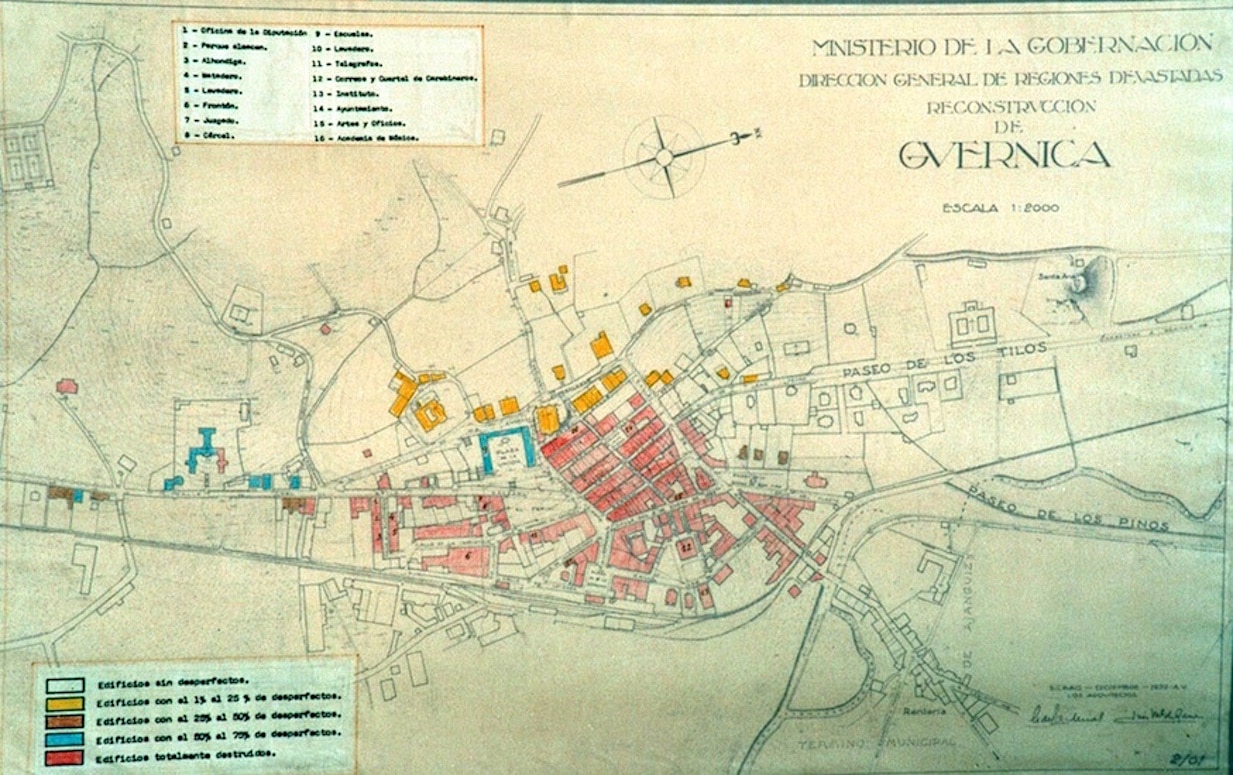

But there isn’t just a map of the savagery. The Italian planes that took part in that war crime also took photographs of the outcome.
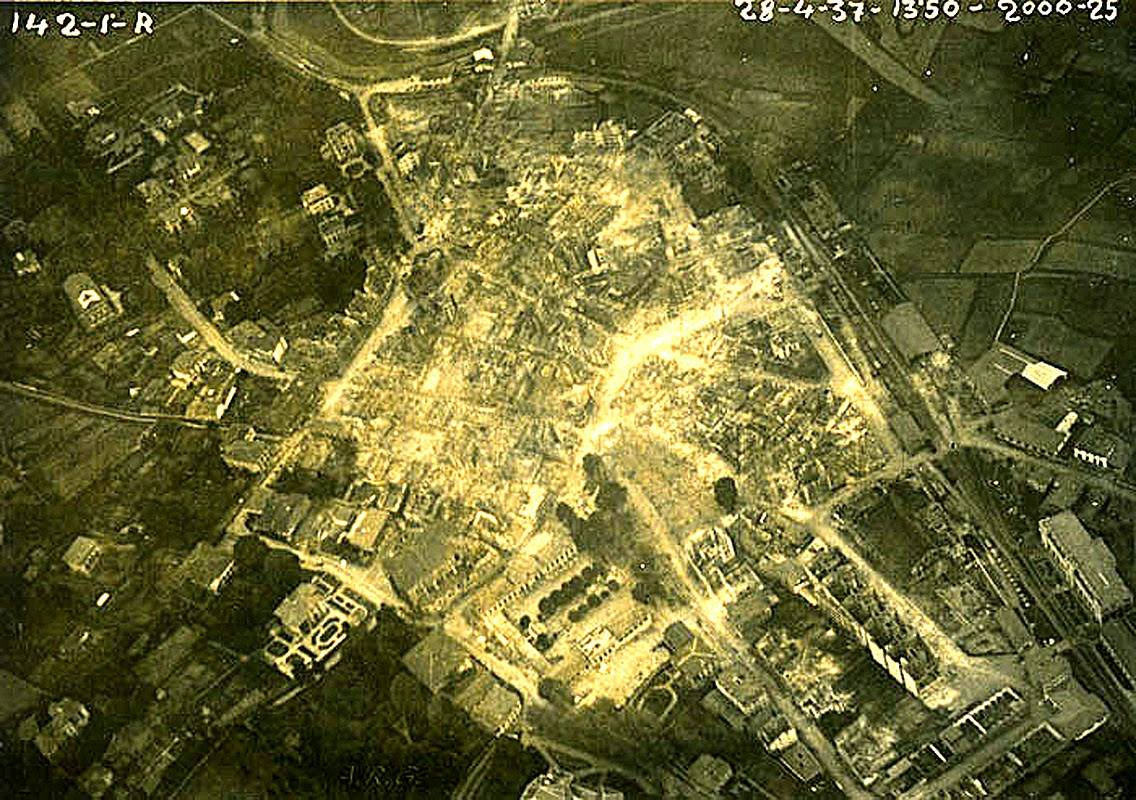

In the archives of rebel Col. Francisco Iglesias Brage, housed in the Archivo del Reino de Galicia.
It’s also a good day to remember the British sailors who broke through the rebel blockade and delivered food to the Basques who were standing up to Franco that they were also witness to what happened in Guernica, and informed the people of Great Britain via the Newcastle newspapers. We’ve dedicated
This is also a good time to remember the video we filmed under the Tree of Guernica itself of Peruvian singer-songwriter Lino Bolaños performing his song “El Árbol” in memory of that attack. This project was carried out in collaboration with the Limako Arantzazu Euzko Etxea.
What those insurgents, rebels, and terrorists who destroyed Guernica and who finished off a democratically-elected government in order to impose a fascist dictatorship that lasted 40 years (due in no small part to the betrayal by Western allies of those who helped them fight off other totalitarian regimes) could not have imagined is that their savagery would become a symbol of peace and to the resistance of democrats against totalitarianism.
And that is the topic we’ll be focusing on in this year’s contribution to our already lengthy series of articles about the Bombing of Guernica.
And we’ll do so by bringing you an article by David McCarthy, chair of the Art and Art History Department at Rhodes College in Memphis, Tennessee about Picasso‘s “Guernica”, the meaning the painting has acquired, and the bombing it represents. The article was published in Zócalo Public Square, a periodical founded in San Francisco in 2003.
In the article, Dr. McCarthy analyzes the power role art has played with regards to war in particular and injustice in general. This is a power art has exercised despite not having any power to directly alter the course of events. Its strength lies in its ability to act on people’s conscience. Its ability to affect, or even awaken, one’s conscience is what gives it that immense power.
With his work, Picasso completed the work that George Steer had started with his article in The Times, which then went on to be the cover of the New York Times along with many other newspapers. Steer told the truth of what had happened, and not only called out the Francoists for their lies, but also shone a light on their monstrous, inhuman souls. Picasso turned that into a work of art, a symbol, a cry against war and against savagery.
Guernica, the tragedy of the sacred city of the Basques, has the reach it has in the world thanks to this painting. This work of art, and its ability to stir souls, has turned Guernica into a world symbol, a city of peace, and an emblem of the consequences of totalitarianism.
But of course, while Guernica got the bombs, Madrid got the painting. A perfect example of how things work in Spain.
We’ll leave you with the article by David McCarthy.
Zócalo Public Square – 24/4/2023 – USA
‘GUERNICA’ DID NOTHING—WHICH IS WHY IT STILL MATTERS
This month marks the anniversary of one of the many atrocities of the last century carried out in the cause of nationalism. On Monday, April 26, 1937, less than a year after dissident Spanish generals launched a coup d’état against a democratically elected coalition government, German and Italian airplanes bombed Gernika, in the Basque Country of Spain.
(Follow) (Automatic translation)
Last Updated on Dec 3, 2023 by About Basque Country




